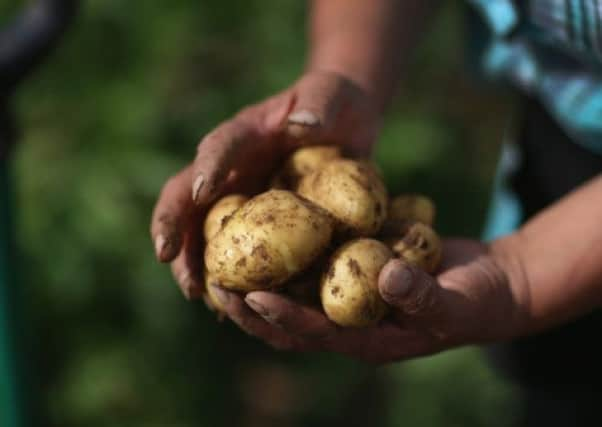Potato developed to beat blight behind Irish famine


Late blight, caused by the organism Phytophthora infestans, remains the potato farmer’s greatest enemy to this day.
UK farmers spend about £60 million annually keeping the infection at bay with pesticides. In a bad year, losses and control measures can account for half the total cost of growing potatoes.
Advertisement
Hide AdAdvertisement
Hide AdIn the latest field trials, conducted in 2012, the fungus was unable to break down the defences of any of the GM potatoes.
Non-modified plants grown at the trial site were all infected after being denied protection from chemicals.
However, no-one can say at this stage how long the GM strain will hold out against blight, which is notorious for its ability to overcome resistance.
Scientists are now conducting further research aimed at identifying multiple resistance genes that will thwart future blight attacks.
“Breeding from wild relatives is laborious and slow and by the time a gene is successfully introduced into a cultivated variety, the late blight pathogen may already have evolved the ability to overcome it,” said lead scientist Professor Jonathan Jones, from The Sainsbury Laboratory.
“With new insights into both the pathogen and its potato host, we can use GM technology to tip the evolutionary balance in favour of potatoes and against late blight.”
The Irish potato famine of 1845 was a disaster for the poor of Ireland who depended on potatoes for food and income.
Over the following ten years, more than 750,000 Irish men, women and children died and another two million left their homeland. Within five years of the famine, the Irish population was reduced by a quarter.
Advertisement
Hide AdAdvertisement
Hide AdBecause of late blight, potatoes are one of the crops most affected by chemical pesticides. In northern Europe, farmers typically spray a potato crop ten to 15 times – even as many as 25 times in a bad year.
The research, which focused on Désirée potatoes, addressed the problem of reinforcing blight resistance while maintaining crop characteristics.
The aim was to produce a crop that could fight off blight without the aid of chemicals.
In three years of trials, the scientists grew potatoes containing a gene from a super-resistant wild strain from South America.
The trials, managed by The Sainsbury Laboratory, took place at the John Innes Centre plant research institute in Norwich.
In 2012, the researchers took advantage of a year with ideal conditions for late blight, the scientists waited for them to be infected naturally by spores blowing on the wind.
By early August, 100 per cent of the non-GM potatoes in the study were infected. In contrast, all the GM plants maintained full resistance against the pest.
The GM plants also produced a much greater potato yield. Results from the trials appear In the journal Philosophical Transactions B of the Royal Society.